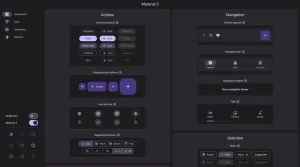The open source toolkit creates embedded graphic components from a single codebase via native Arm code. What is in the newest version? There’s the ability to create custom menu bars, cascading menus, improved Material 3 support, and some new debugging and internationalisation tools.
Menus
For the menu options, Flutter 3.7 can now create menu bars and cascading context menus. The Flutter team writes:
“For all platforms, you can define a Material Design menu that provides cascading menu bars (MenuBar), or standalone cascading menus triggered by another user interface element (MenuAnchor). These menus are fully customizable, and the menu items can be custom widgets, or you can use the new menu item widgets (MenuItemButton, SubmenuButton).”
Material 3
In terms of Material 3 support, version 3.7 incorporates these widgets: Badge, BottomAppBar, Filled and Filled Tonal buttons, SegmentedButton, Checkbox, Divider, Menus, DropdownMenu, Drawer and NavigationDrawer, ProgressIndicator, Radio buttons, Slider, SnackBar, TabBar, TextFields and InputDecorator, and Banner.
You can see these in action in an interactive demo online (pictured above).
Misc
An Impeller rendering engine is also ready for preview on iOS on the stable channel, as an alternative to the Skia renderer. It’s expected to become the default renderer on iOS in a forthcoming stable release, it’s noted.
In terms of DevTools, there’s an overhauled memory debugging tool: there are three new feature tabs, Profile, Trace, and Diff. New features include the ability to analyze the current memory allocation for your app by class and memory type, investigate what code paths are allocating memory for a set of classes at runtime, and diff memory snapshots to understand memory management between two points in time.
You can read more on the official announcement.

